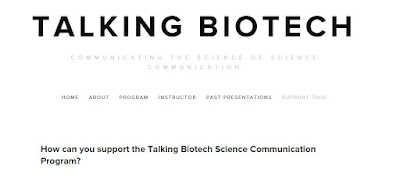A Crisis Building
I just received this from an undergraduate student at University of Arizona. I redacted the specifics about her research work as an undergrad, but I will add that she's a Hispanic female interested in graduate school in my lab. This is the saddest damn thing I've read in a long time, and a symptom of what comes from Ruskin's digital McCarthyism. Dear Dr. Folta, I recently saw your AMA on reddit concerning the USRTK group, and how their obtaining of your personal and private communications has begun to influence your life, and the narrative that has been developed by them concerning your work. Being somewhat familiar with your work, it was shocking to hear the lengths that any group would go to in order to give your work a bad name.... this was the part about her research, so I'll omit that for her privacy. ....Your experiences that you have shared make me worry for the future of this area of science. I think that outreach and public education in scien...





